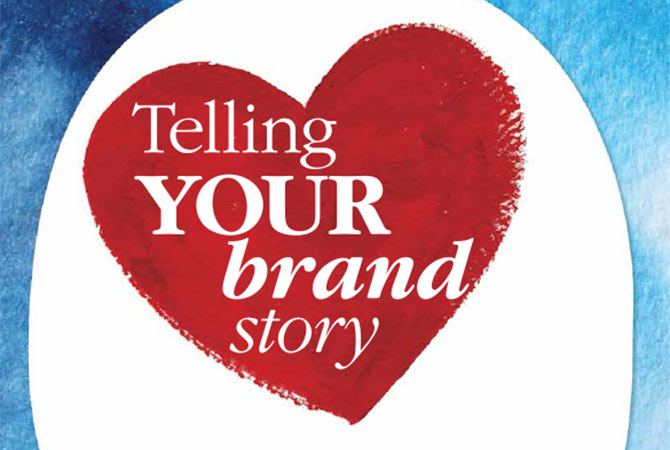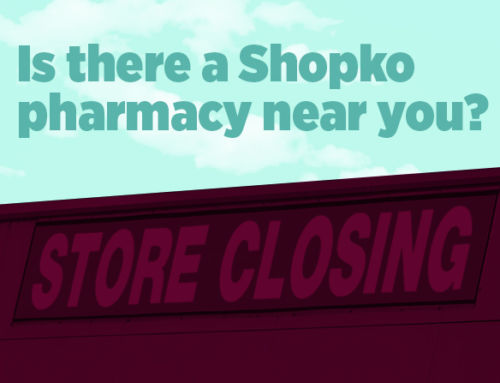In the January 2016 issue of America’s Pharmacist published “Telling Your Brand Story” which included some sage insights. Chris and America’s Pharmacist have allowed us to share this story with you in its entirety.
by Chris Linville, managing editor of America’s Pharmacist.
In the January issue of America’s Pharmacist, we get an expert’s view on methods to help understand and manage your most important asset: your pharmacy’s brand. In upcoming issues we will look at ways to help build collaborative relationships between pharmacists and physicians, and turning stories about your pharmacy into an executable marketing strategy.
In a post-convention program entitled “Creating, Telling, and Selling Your Value Story” at the NCPA Annual Convention last fall, Kurt Proctor, NCPA senior vice president for strategic initiatives, moderator for the event, offered this anecdote summing up the goals for the session:
“If you got on an elevator with a potential new patient, can you tell him about you and your pharmacy in a way that entices him to transfer to you before the doors open?” he asked. “What about a doctor? Or a local employer? Why don’t you run an immunization program for them, or smoking cessation, or something else? We want to make sure you have a crisp elevator speech and message about your pharmacy to those you run into.”
BRAND ASSETS
So, what are the key elements of a pharmacy branding campaign? How do you create a compelling message for your community pharmacy? For pharmacies, the most important asset is their brand, says Wayne Glowac, chief marketing officer for Pharm Fresh, Waunakee, Wis., a company that, among other things, assists pharmacies in doing just that—marketing the brand. Glowac says a brand is “the promises and perceptions about your pharmacy.” Brand management is “understanding and impacting those promises and perceptions for maximum loyalty and profitability.”
In Glowac’s opinion, getting independent pharmacists to tell their tale is vitally important. “Your brand story summarizes and communicates the heart and soul of your business and emotionally connects your brand with the consumer,” he says. Why do pharmacists often struggle with marketing their business? Glowac thinks it’s the “soft and fuzzy side of it” that trips them up.
“My experience with health care professionals is that they are first and foremost scientists who happen to care about people, but don’t understand that there is an unscientific art to marketing,” he says. “We all have a responsibility to better tell the story of locally owned independent community pharmacy and how important it is. Stories connect people. We forget that in marketing. In marketing we want to have the clever slogan or shout from the rooftop, but really the most effective form of communication is stories.”
So, why should pharmacists be concerned about telling their story effectively? For one, Glowac says that we are in “an amazingly overcommunicated society.”
“I can remember not that long ago hearing that we received 1,000 advertising messages per day,” he says. “Then it went to 2,000. Now there isn’t even data to accurately say how many messages we are bombarded with in a day. People are flooded with these messages. So it’s even more important that you create a message from the heart that resonates with people, because there is less time for people to get and hear and understand your message.”
Glowac says that in 1964, a Procter & Gamble product manager could reach 80 percent of women ages 18-49 with three TV commercials (during a time with only three channels). This was during the “Mad Men” era, and 80 percent of women in that age group were watching TV.
“You could buy your way into people’s minds with just three TV commercials,” he says. “Those days are gone. It’s more important than ever to craft a succinct elevator speech, and use that elevator speech consistently in your marketing.”
Glowac says that although word of mouth is still an impactful form of advertising, there has been a shift in recent years. An October 2009 study by Harris Interactive indicated that for the first time, more people were going on the Internet for information instead of asking family or friends. When word of mouth was replaced by word of mouse, the No. 1 source became search engines. This should serve as a wake-up call, Glowac says.
“I am hearing a disturbing fact that a lot of independent pharmacies don’t have a website,” he says. “You have to have a website, because people will perceive the value of your business based upon your site. It doesn’t have to be elaborate or expensive, but you have to have one. Because people get that local pharmacies are about caring, but they have to feel that you are amazingly competent at what you do. People will judge you by your lack of a website, and it won’t be positive.” Even the most basic website with the name, logo, address, phone number and hours of operation establishes the online presence for patients and other health care professionals who may be looking for the pharmacy.
LEVELS OF BRAND ASSOCIATION
For Glowac, levels of brand association speak more to the art than the science of marketing. He breaks it into a pyramid with three tiers. At the bottom are the attributes. They are the easiest to deliver, are easily imitated, are the least meaningful, and the least interesting. Yet they are also what’s talked about the most. Attributes might be basic offerings and OTC products that just about every pharmacy has.
The middle tier is comprised of the functional benefits provided to customers. If the pharmacy has a drive-thru service, that’s a feature as it’s more convenient. It’s not as easily imitated.
At the top of the pyramid are beliefs and values. They are the most meaningful and most difficult to imitate, but the hardest to deliver. Pharmacies that can reach this level are stepping up their game.
As an example of beliefs and values Glowac says that if pharmacists asked their best patients what they most appreciated about their pharmacy, he suspects it wouldn’t be their highly efficient service, or their private conference rooms (though they certainly do like those aspects). No, he thinks it’s simply a case of being there to answer their questions, and being their advo- cate to find the best solutions for their health care concerns.
“They would say, ‘I had a sick kid and they stepped up for me.’ Or, ‘I had a conflict with some prescriptions, and they made me feel like they really cared for me because they gave me some amazing advice. It certainly made me healthier and could have saved my life,’” Glowac says. “People talk about the upper levels of beliefs and values, and that’s where the brand lives, that’s where the heart is, and that’s where the power of your story is.”
Glowac says it costs about $80 to acquire a patient through advertising and marketing. To help keep those patients, he suggests that pharmacy owners do an exercise with key staff. First, he says, draw a pyramid and on the bottom list all of the attributes of the business (hours of operation, drive-thru, generic offerings, OTC, and everything else associated with the pharmacy). After that, start thinking from a customer standpoint – what benefit does this provide patients, the community, and the marketplace?
“Eventually you’ll start talking in more emotional terms,” Glowac says. “And then you should start thinking about some of the comments that have stuck in your heart over the years that you have heard from people. Those can become the beliefs and the values that you live in your organization. That’s why you come to work every day. People need to feel cared for. You can help your staff understand why you got into the business, and what your mission and values are. They can make people feel welcome when they come into the store and amazing things can happen.”
Sometimes the story needs a rewrite if the pitch is ineffective. Glowac mentioned a health care service provider in Wisconsin as an example. The com- pany wanted to market to businesses to buy into their insurance plan, but a lot of the businesses said the organization was uncaring, didn’t listen, and was uncooperative.
“The organization was humbled by what it learned,” Glowac says. “Its position statement was, ‘To be a better leader in health care, we’re following your lead.’ But saying it isn’t enough, you have to live the brand.
So what they did was take their upper management executives to business meetings with local business leaders throughout their service area (15 counties) and had meetings every quarter. The business leaders got the crap beaten out of each other because they hadn’t listened.”
However, the company got the message. “They realized they had to make a change,” Glowac says. “So the executives would go and listen to the challenges they had, and they made significant strides. Because they understood their story, they needed to change their story, and they lived their story.”
Glowac says the growing interest in “buying local” fits perfectly for independent community pharmacies. Some of that interest comes from a demo- graphic that may at first surprise you: Millennials. While Baby Boomers may drive much of the prescription business now, this group of young adults and parents are looking for trustworthy products and services. They just have a tendency to go online and research the options before taking action.
Millennials are interested in quality over quantity and appreciate custom or unique offerings — something they may not ever know the local independent pharmacy provides if they can’t find a website. In a world where interpersonal communication seems to be a dying art, a local pharmacy provides a tangible and comforting sense of place.
“We’re so busy being wired and digital that we want some personal connection,” he says. “People are yearning for that. Mind share leads to market share. Create a message from the heart that connects with people. Stories have power. Stories connect people.”
Whether you think about it or not, your pharmacy is a brand — and your brand has a story to tell. At Pharm Fresh, we never miss an opportunity to help you promote your brand and story. We can help you improve your pharmacy’s brand with great design, the smartest marketing techniques, and high quality materials. Call us today at 877.327.4276 to get started on your story.





